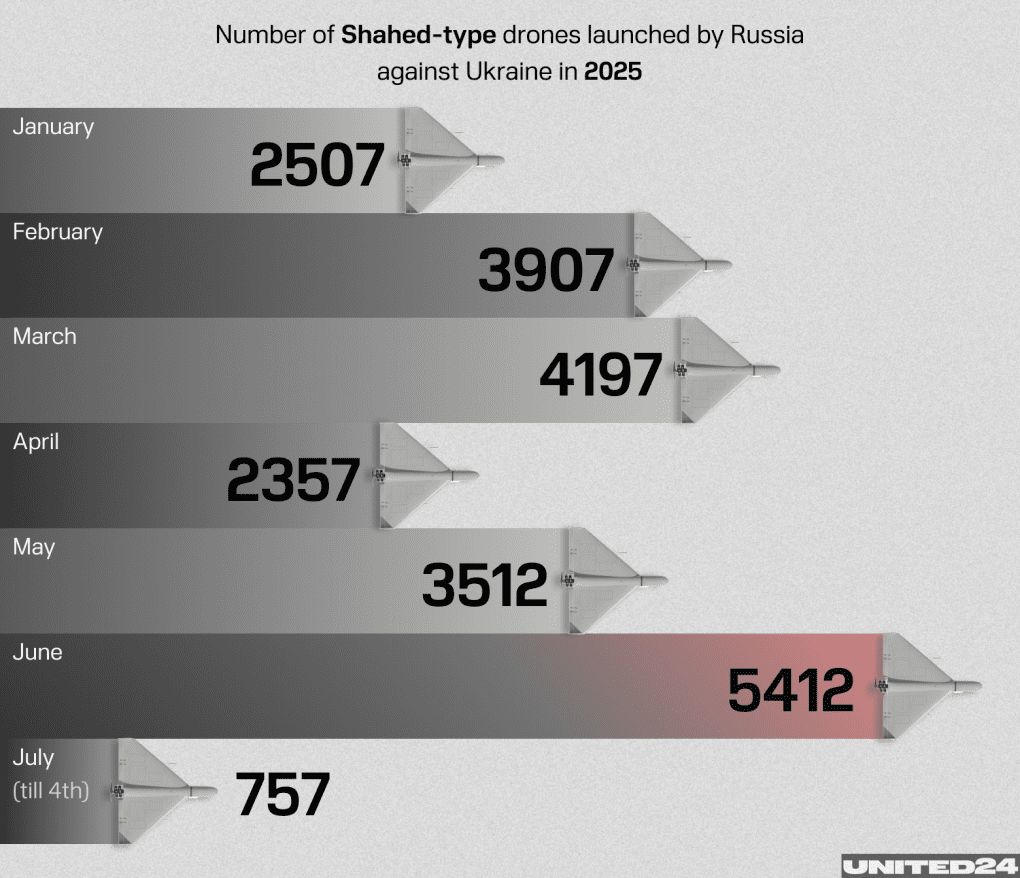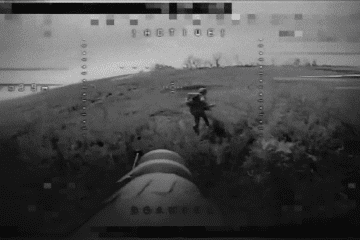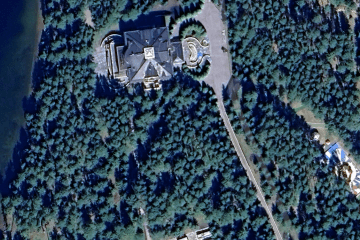- Category
- War in Ukraine
Russia’s Drone Barrage Against Ukraine Hits New High on July 4

Russia’s drone war on Ukrainian cities is intensifying, with 550 drones and missiles launched in one night—the second major assault in a week. The strikes aim to overwhelm air defenses, making interception systems critical for survival.
The night of July 4 was another sleepless one for Kyiv residents, with air raid sirens lasting 8 hours and 49 minutes. After a brief lull, alerts resumed for nearly four more hours. The Russian attack occurred following a conversation between US President Donald Trump and Russian leader Vladimir Putin.

This latest barrage set a new record for the volume of weaponry used: 550 drones of various types, along with cruise and ballistic missiles. Ukrainian Air Force units successfully shot down 478 aerial targets. It was a record-setting attack in modern warfare—but for Ukraine’s air defenders, such scale has become nearly routine.
Less than a week earlier, Russia launched another major strike involving 537 drones and missiles. Of those, 473 were intercepted. In between, several hundred more Shahed drones were launched in early July. In June 2025 alone, Russia fired over 5,000 airborne weapons — both drones and missiles—at Ukraine.
No other country in the world has faced such sustained bombardment since World War II.
Russia currently produces about 190 Shahed drones daily, according to open-source data—nearly 6,000 per month—with plans to ramp up to 10,000 monthly by year’s end. These drones are not stockpiled; they are produced solely for the purpose of targeting Ukrainian cities. In June alone, these attacks killed dozens and wounded hundreds.
Ukraine’s air defense faces an unprecedented drone war
Ukraine is mobilizing every available resource to protect its cities and civilians—the primary targets of Russian strikes.
Among the innovations are special drone interceptors. Ukraine’s Armed Forces are keeping details of this technology under wraps to prevent Russia from adapting its Shahed drones. However, it is known that 60 Russian Shaheds were brought down on July 4 alone using this system. Since testing began, these interceptors have downed a total of 550 enemy drones.
Ukrainian defense-tech startups are also developing a range of countermeasures, from electronic warfare (EW) systems designed to disrupt Shaheds to automated turret systems like the Sky Sentinel, which can offer additional urban protection.
Despite these advancements, Ukraine remains critically dependent on deliveries of Patriot missile interceptors—the only weapons capable of stopping ballistic missiles, a consistent component of Russia’s large-scale attacks. European partners are contributing their stockpiles, but continued US support is equally vital.
Russia continues to use ballistic missiles against peaceful residential buildings. One such strike in mid-June destroyed an apartment block, killing around 20 civilians.
-29a1a43aba23f9bb779a1ac8b98d2121.jpeg)


-24deccd511006ba79cfc4d798c6c2ef5.jpeg)


